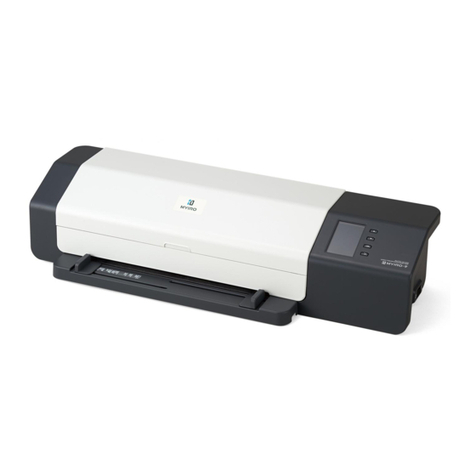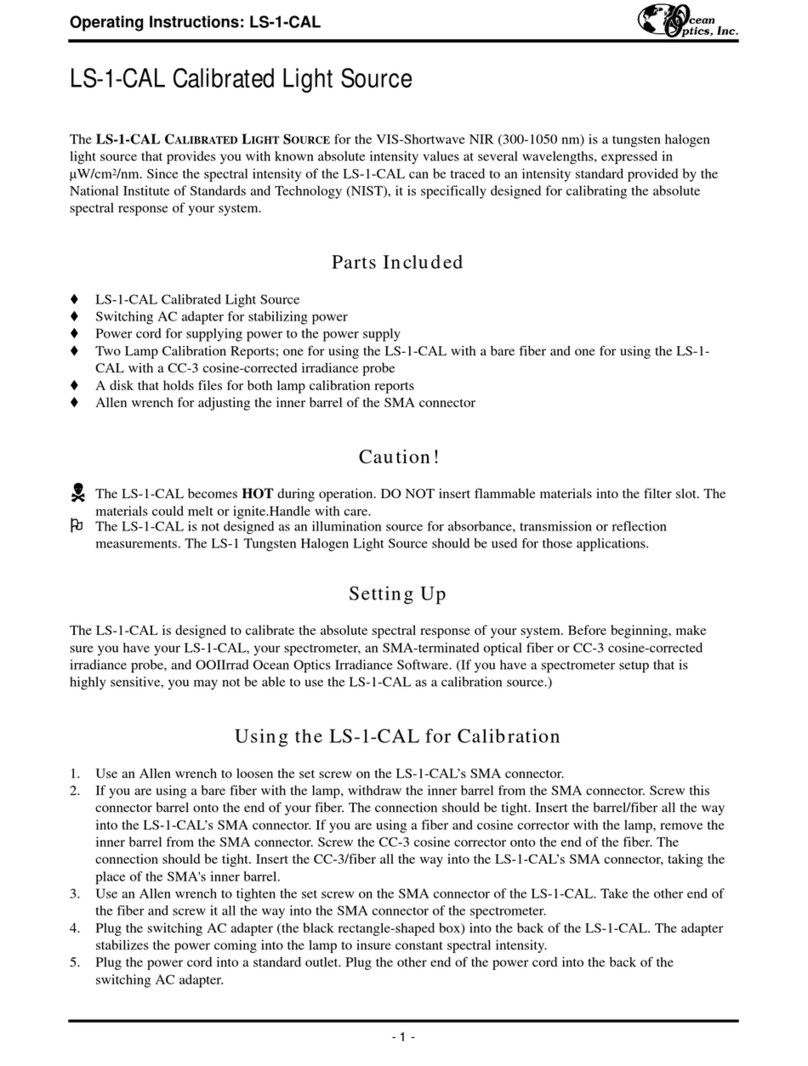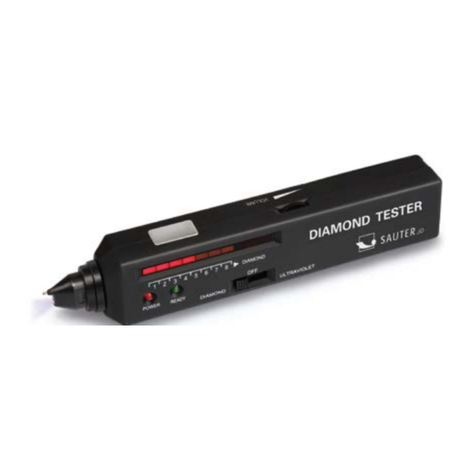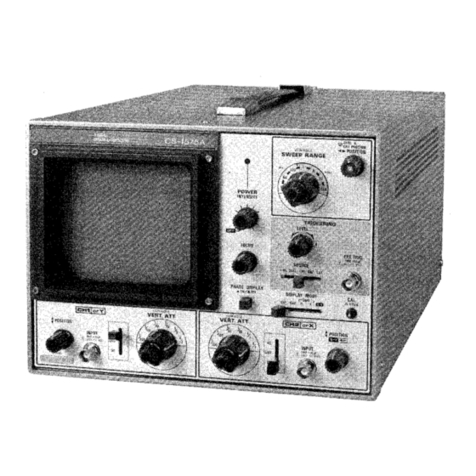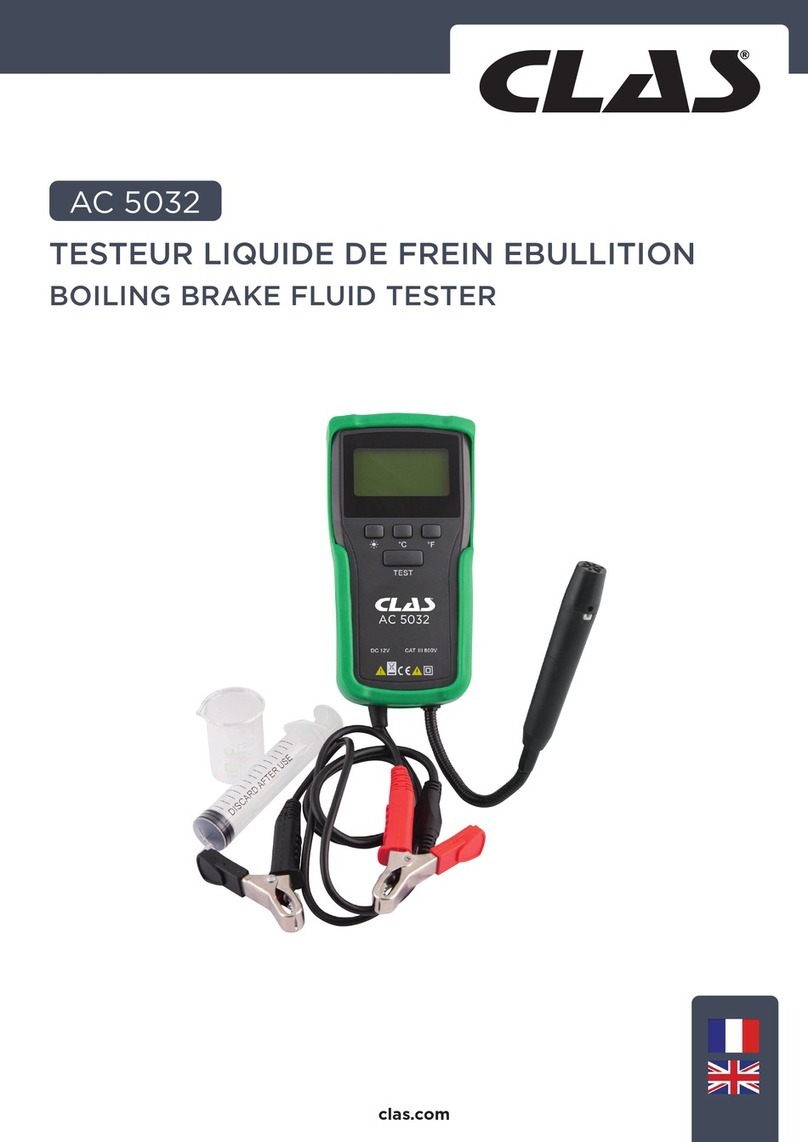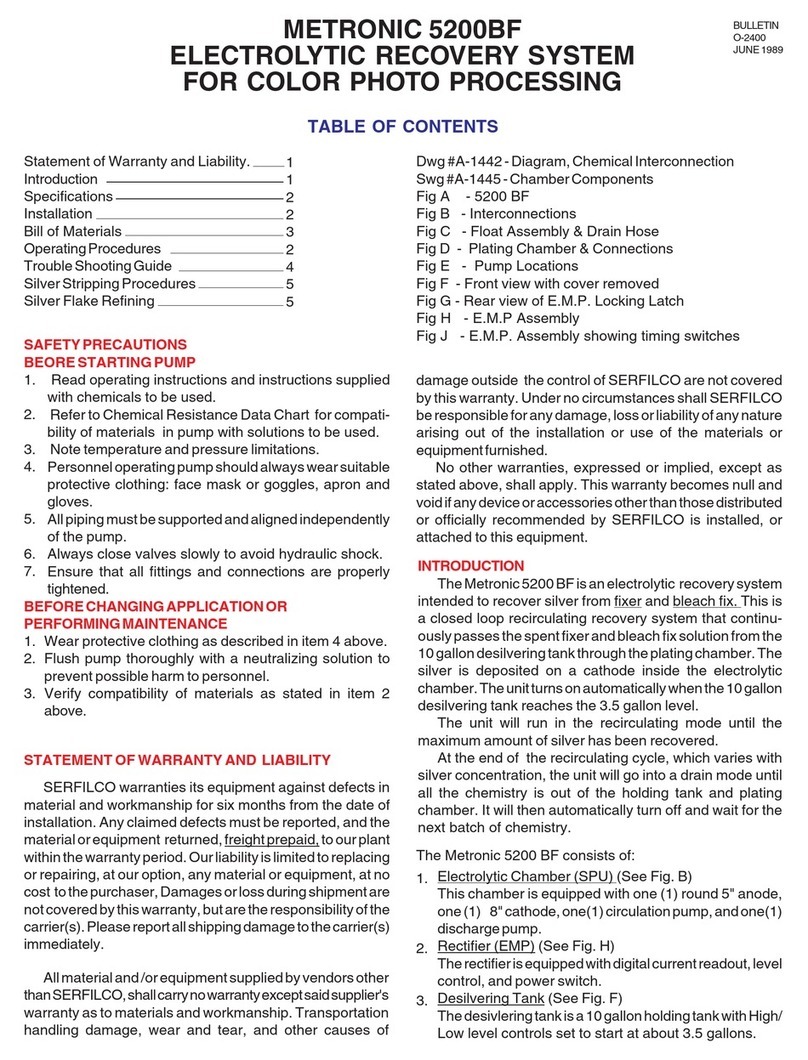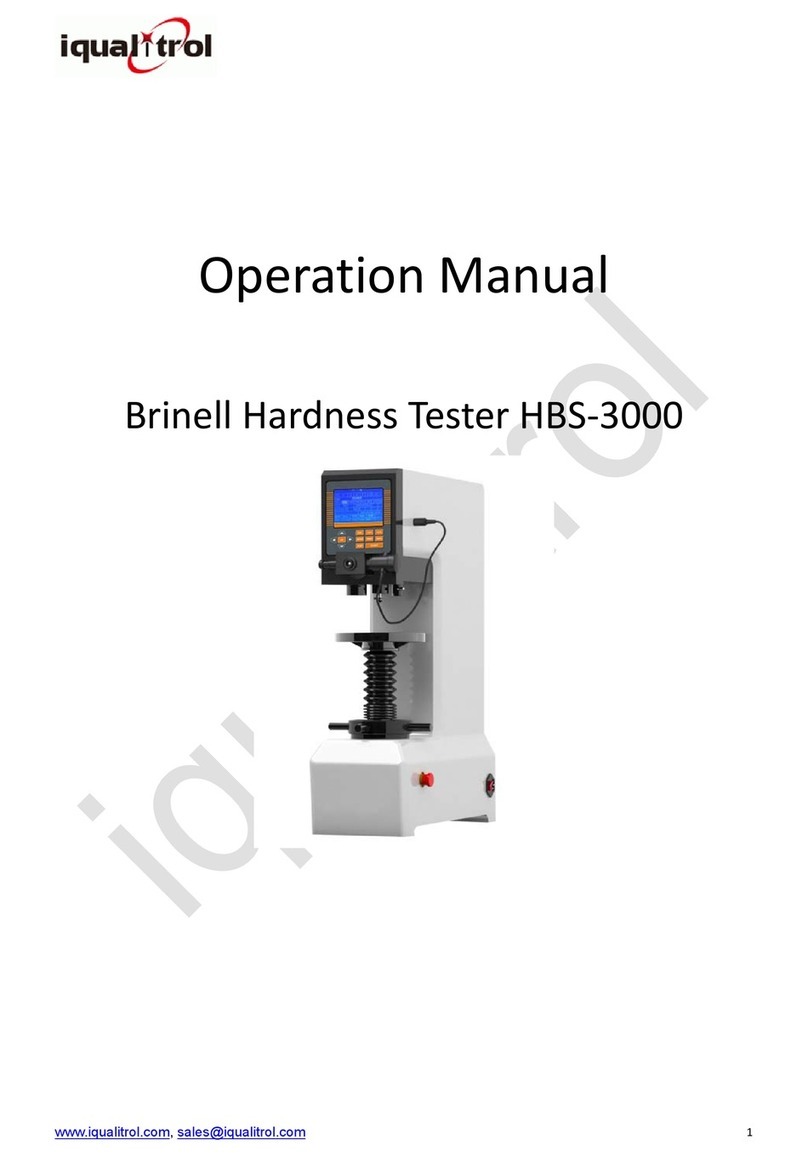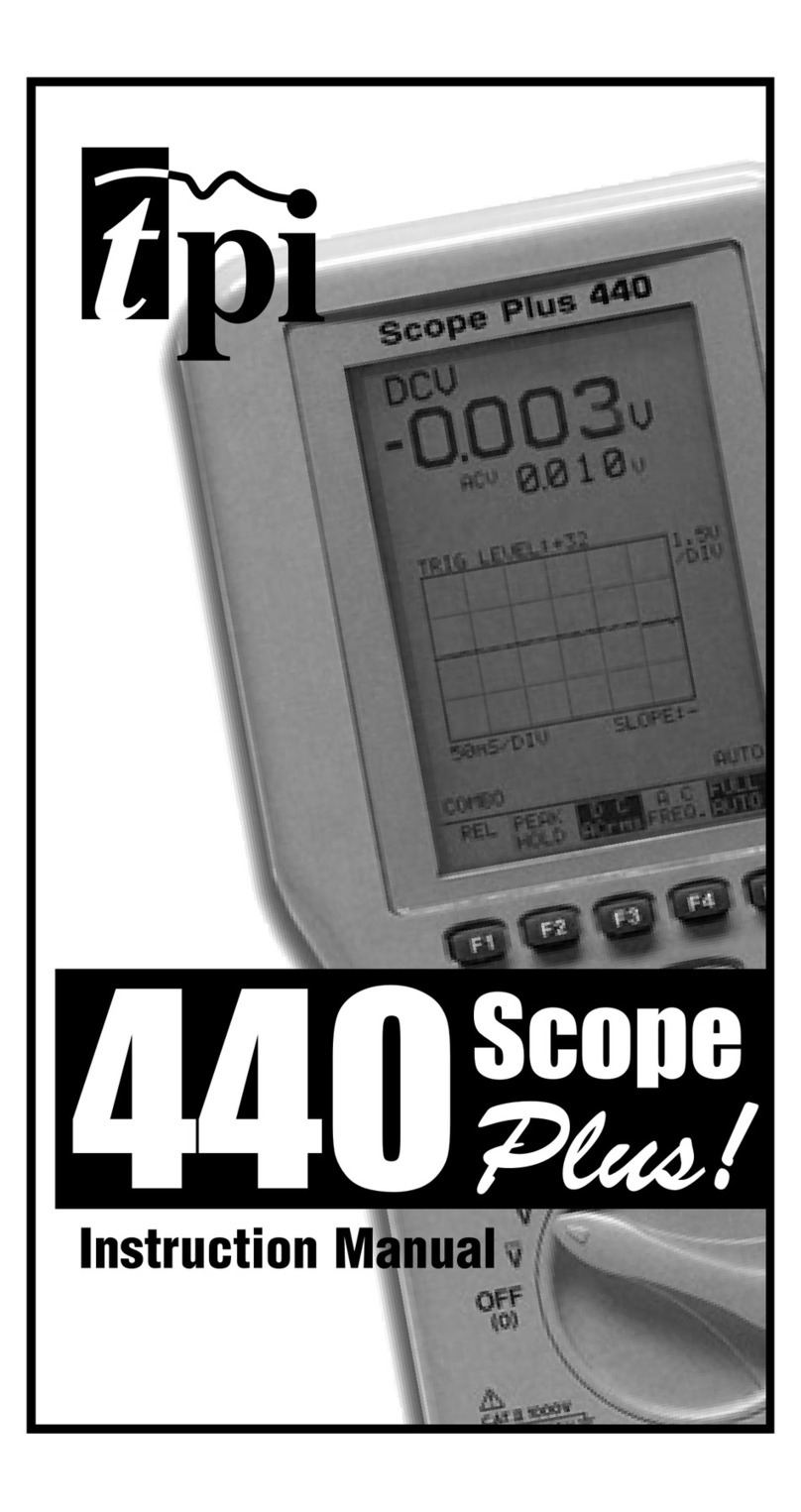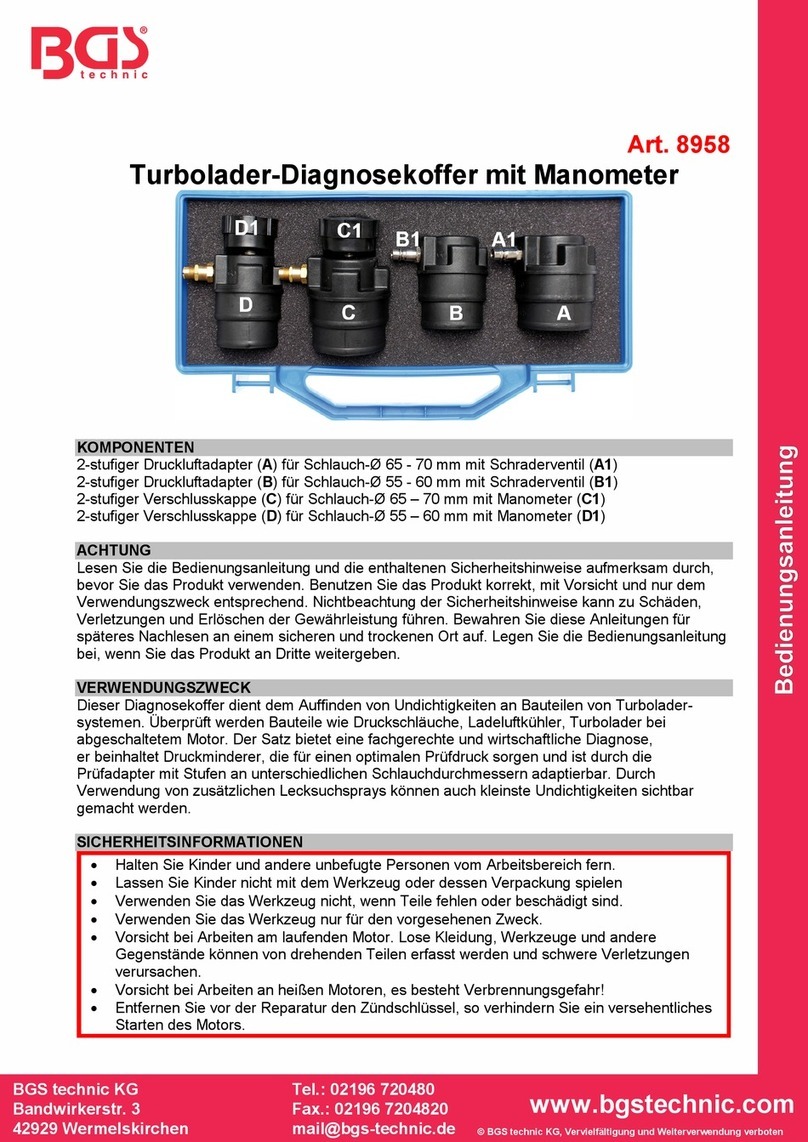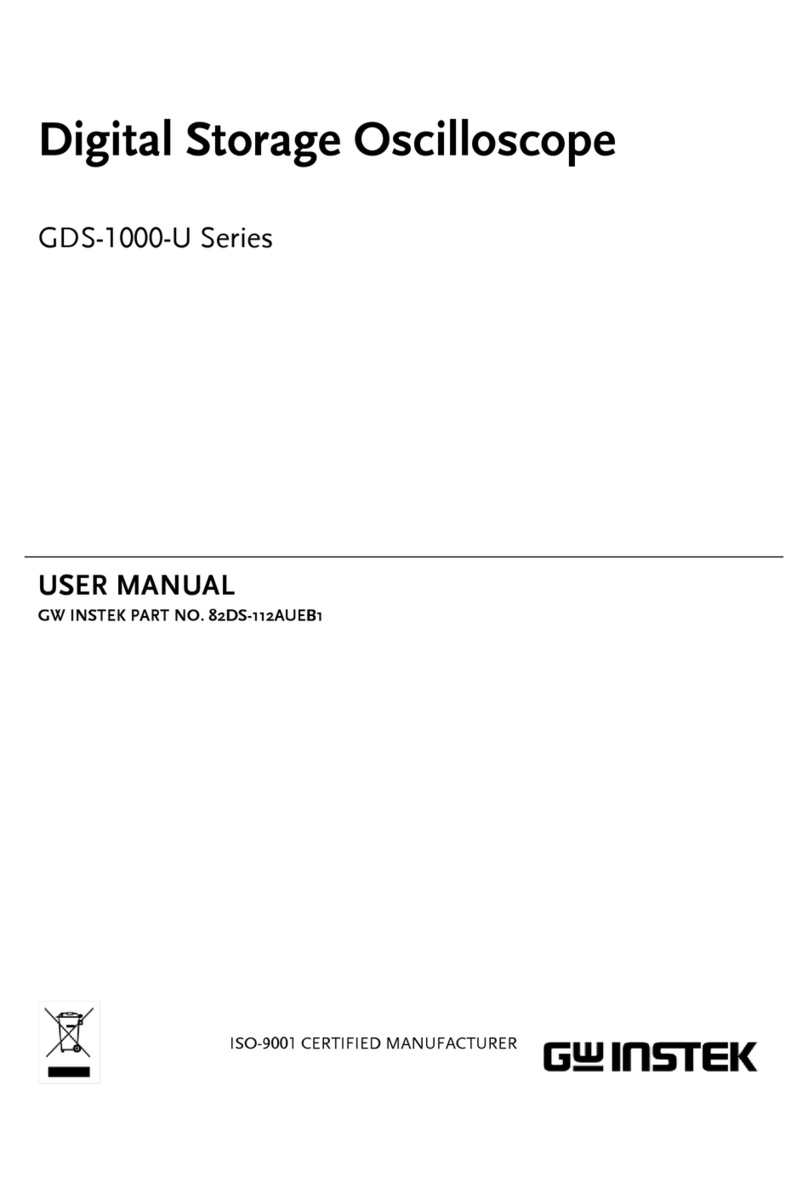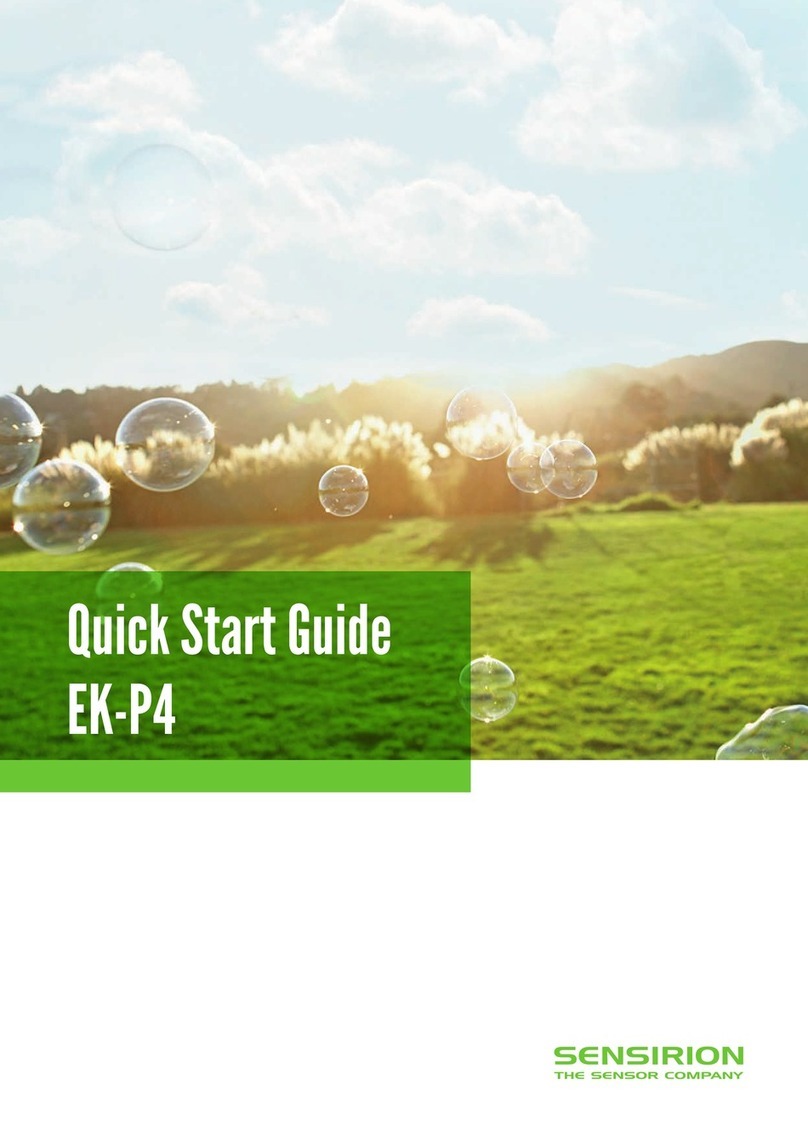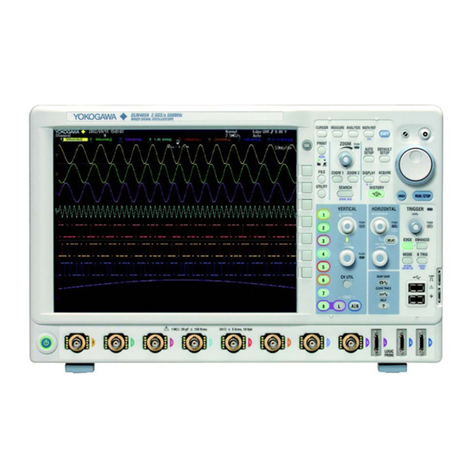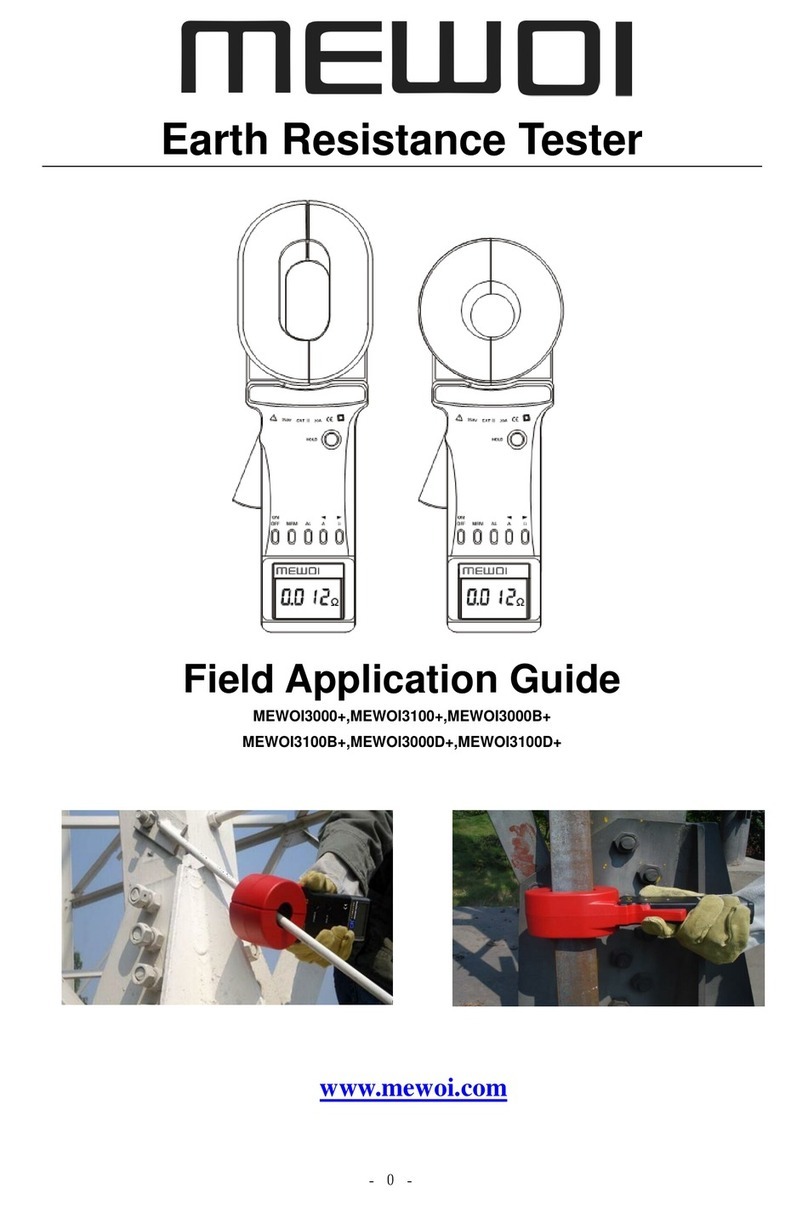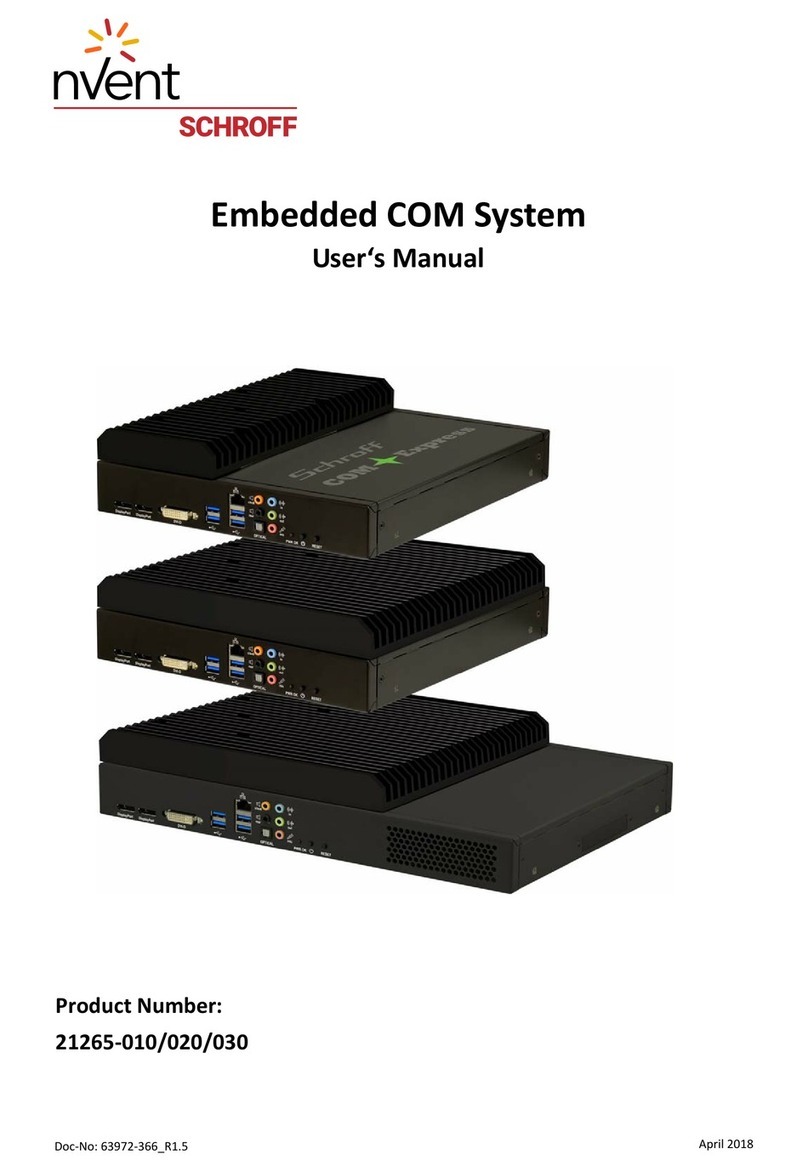DD Compound Vac Checker User manual

Vac Checkerâ
Digital Vacuum Gauge
Instruction manual

Content
Content
1Safety and waste disposal .......................................................................... 3
1.1 About this document .............................................................................. 3
1.2 Safety .................................................................................................... 3
1.3 Waste disposal ...................................................................................... 4
2Technical data.............................................................................................. 5
3Description of the instrument..................................................................... 7
3.1 Use ........................................................................................................ 7
3.2 Instrument overview............................................................................... 7
3.3 Displays overview .................................................................................. 8
3.4 Control keys overview............................................................................ 9
4Operation.................................................................................................... 10
4.1 Connecting........................................................................................... 10
4.2 Switching instrument on and off........................................................... 10
4.3 Switching background illumination on and off ...................................... 10
4.4 Setting units and AutoOff..................................................................... 11
4.5 Displaying temperature values............................................................. 14
4.6 Field calibration.................................................................................... 14
4.7 Calibration with reference vacuum gauge............................................ 15
5Maintenance............................................................................................... 16
5.1 Changing batteries............................................................................... 16
5.2 Cleaning the instrument....................................................................... 16
6Tips and assistance .................................................................................. 18
6.1 Questions and answers ....................................................................... 18

1Safety and waste disposal
3
1 Safety and waste disposal
1.1 About this document
·The instruction manual is an integral part of the instrument.
·Keep this document throughout the entire operating life of the instrument.
·Always use the complete original instruction manual.
·Please read this instruction manual through carefully and familiarise yourself
with the product before putting it to use.
·Pay particular attention to the safety instructions and warning advice in order
to prevent injury and damage to the product.
1.2 Safety
General safety instructions
·Only operate this instrument in the proper manner, for its intended purpose
and within the parameters specified in the technical data.
·Do not apply any force to open the instrument.
·Do not operate the instrument if there are signs of damage at the housing,
mains unit or connected cables.
·Always comply with the locally valid safety regulations when carrying out
measurements. Dangers may also arise from objects to be measured or the
measuring environment.
·Do not store the product together with solvents.
·Do not use any desiccants.
·Only perform maintenance and repair work on this instrument that is
described in this documentation. Follow the prescribed steps exactly.
·Use only original spare parts from Testo.

1Safety and waste disposal
4
Batteries
·Improper use of batteries may cause the batteries to be destroyed, or lead to
injury due to current surges, fire or escaping chemicals.
·Only use the batteries supplied in accordance with the instructions in the
instruction manual.
·Do not short-circuit the batteries.
·Do not take the batteries apart and do not modify them.
·Do not expose the batteries to heavy impacts, water, fire or temperatures in
excess of 60 °C.
·Do not store the batteries in the proximity of metal objects.
·Do not use any leaky or damaged batteries.
·In the event of contact with battery acid: rinse affected areas thoroughly with
water, and if necessary consult a doctor.
·Take batteries out of the instrument immediately if they are not functioning
properly or if they show signs of overheating.
·Remove all batteries from the instrument if it is to remain unused for a longer
period.
Warnings
Always pay attention to any information denoted by the following warnings.
Implement the precautionary measures specified!
Display
Explanation
WARNING
Indicates possible serious injury.
CAUTION
Indicates possible minor injury.
ATTENTION
Indicates possible damage to equipment.
1.3 Waste disposal
·Dispose of faulty rechargeable batteries and spent batteries in accordance
with the valid legal specifications.
·At the end of its useful life, dispose of the instrument via separate collection
for electro- and electronic devices. Please observe local regulations
concerning waste disposal. Or alternatively return the product to
DD-Compound for disposal.

2Technical data
5
2 Technical data
Feature
Values
Absolute pressure sensor
(absolute)
max. 6 bar (87 psi)
ATTENTION
Pressure exceeded.
Destruction of the absolute pressure
sensor!
-
Do not exceed the maximum value.
Vacuum measuring range
1100 - 0 mbar / 825080 - 0 micron
Sensor overload (relative)
5 bar / 72 psi
Vacuum resolution
0.01 hPa / 10 micron
Vacuum accuracy
(at 22
°C, after field calibration,
confidence level
95%)
- 0 to 1.33 hPa / 0 to 1000 micron: up to
±10 micron
-
0 to 200 hPa / 0 to 150000 micron:
±0.3% FS = ±0.6 hPa
-
200 to 1100 hPa / 150000 to 825080
micron:
±0.3% FS = ±3.3 hPa
Operating temperature
-20 to 50 °C / -4 to 122 °F
Storage temperature
-20 to 50 °C / -4 to 122 °F
Temperature measuring range
-20 to 50 °C / -4 to 122 °F
Temperature resolution
0.1 °C / 0.1 °F
Battery life
2400 h (2x AA) (approx. 130 h with background
illumination activated)
Protection class
IP 42
Parameter
mmHG, Torr, mbar, hPa, micron, inH2O, inHg.
Pa
Measuring cycle
0.5 sec
Sensor
1× absolute pressure sensor
Connections
- 2× 7/16" UNF
- 1x MiniDIN
Warranty
2 years

2Technical data
6
Setting values alarm treshold
Unit
Setting range
Resolution
mbar / hPa
0 - 7,5
0,05
micron
0 - 7500
50

3Description of the instrument
7
3 Description of the instrument
3.1 Use
The Vac Checkerâis a digital vacuum gauge for the precise measurement of
extremely small pressures in the vacuum range. This allows you to monitor the
evacuation (usually during commissioning) of refrigeration systems and heat
pumps.
With the Vac Checkerâ, you can therefore measure the current pressure in a
refrigeration system, and thus gather information about the degree of
dehumidification and the removal of foreign matter (oils, foreign gases, etc.).
A vacuum gauge is always used in conjunction with a vacuum pump (generates
the vacuum). A manifold (analogue or digital) is also often used in order to
obtain controlled access to the refrigeration system.
3.2 Instrument overview
Element
Function
1
MiniDIN probe socket
Cable connection for connecting to the testo 570.
2
Display
Displays instrument status icons, measuring units
and measuring values.
3
Control keys
Instrument operation.
4
Connections 7/16" UNF,
brass
Connection of refrigerant hoses, vacuum pump,
manifold
s, etc.

3Description of the instrument
8
5
Hook
Suspension device
6
Battery compartment
Contains two AA batteries.
3.3 Displays overview
Element
Function
1
Icon [ ]
Displays the remaining battery capacity.
>75%
>50%
>25%
<10%
2
Icon [
]
An alarm threshold is set.
3
Temperature display
- selected, currently measured temperature
-
Measurement parameter:
TH2O = evaporation temperature of water
Tamb = ambient temperature
Dt = temperature difference between
evaporation temperature of water and ambient
temperature
- unit set (°C, °F)
4
Slave Mode
Appears when the Vac Checkerâ, is connected to
a testo 570 via a connecting cable and the
testo
570 is in Evacuation mode.

3Description of the instrument
9
5
Pressure display
Displays the currently measured pressure, the
measurement parameter and the unit set (mmHG,
Torr, mbar, hPa, micron, inH2O, inHg
).
3.4 Control keys overview
Element
Function
1
- Switches to the settings.
- Switches between the set-up options.
2
Switches the display illumination on or off.
3
Switches the instrument on or off.
4
- Switches between the temperature displays.
- Navigates in the Set menu.

4Operation
10
4 Operation
4.1 Connecting
Always use refrigerant hoses that are specifically intended for
evacuations.
1
- Remove sealing caps.
- Connect the
Vac Checkerâ,
to the
circuit.
4.2 Switching instrument on and off
1
- Press
.
ê
The instrument switches on or off.
4.3 Switching background illumination on
and off
1
- Switch the instrument on.
- Press
.
ê
The background illumination switches
on or off.

4Operation
11
4.4 Setting units and AutoOff
The set-up menu must always be completely navigated through, even if
only one parameter needs to be changed.
1
- Switch the instrument on.
2
- Press to change settings.
3
- Press to set the pressure unit
required.
4
- Press .
ê
The unit is set.
ê
The display shows the temperature
unit.

4Operation
12
5
- Press to set the temperature unit
required.
6
- Press .
ê
The temperature unit is set.
ê
The display shows the setting for the
alarm threshold.
Adjusting the alarm threshold causes an alarm to be triggered when the
set value is exceeded.
7
- Press to set the alarm threshold.
8
- Press .
ê
The alarm threshold is set.
ê
The display shows the AutoOff setting.
If AutoOff is activated, the instrument switches off after 2 hours in which
no buttons are pressed.

4Operation
13
9
- Press to switch AutoOff on or off.
10
- Press .
ê
All settings are stored.
ê
The display changes to the measuring
mode.
ê
The instrument can now be used.

4Operation
14
4.5 Displaying temperature values
1
- Press to change the temperature
measurement parameter.
ê
The temperature measurement
parameter switches between TH2O,
in °F for °F.
4.6 Field calibration
- Field calibration should be carried out at <15 hPa, field calibration is
not possible at ambient pressure.
-
The connected vacuum pump should ideally be able to create a
minimum trace pressure of <0.1hPa.
- Field calibration tunes the Vac Checkerâto your vacuum pump.
1
- Connect the vacuum pump to a port of the Vac Checkerâ.
- Close the second port with the sealing cap
.
- Start the vacuum pump.
2
- Wait until minimum pressure is reached.
- Press
and at the same time for at least 3 seconds.
ê
The
Vac Checkerâis zeroed and field calibration is completed.

4Operation
15
4.7 Calibration with reference vacuum
gauge
- Calibration should be carried out at <15 hPa (<11250 microns),
calibration is not possible at ambient pressure.
- You need a reference vacuum gauge.
1
- Connect the vacuum pump to a port of the reference vacuum gauge
- Connect the
Vac Checkerâin parallel.
- Start the vacuum pump.
2
- Wait until minimum pressure is reached. (Duration approx. 2 min)
- Press
and at the same time for at least 3 seconds.
- Using the
key, input the reading from the reference vacuum gauge
(e.g. 150 microns/0.2 hPa).
- On the
Vac Checkerâpress and at the same ti
me for at least
3
seconds.
ê
The
Vac Checkerâis calibrated and calibration is completed.

5Maintenance
16
5 Maintenance
5.1 Changing batteries
1
- Switch the instrument off.
2
- Flip hook up.
3
- Open the battery compartment.
4
- Remove batteries.
5
- Insert new batteries, observing the
indications inside the battery
compartment.
6
- Close the battery compartment.
7
- Fold hook down.
5.2 Cleaning the instrument
ATTENTION
Agg
ressive cleaning agents or solvents.
Sensor may be damaged!
-
The sensor should not be cleaned.
ATTENTION
Aggressive cleaning agents or solvents.
The instrument may be damaged!
-
Only clean the instrument housing.
-
Use mild household cleaning agents or soapy water.
ü
- Close the connections using the sealing caps.
- Close the battery compartment lid.

5Maintenance
17
1
- Wipe the instrument housing with a
damp cloth. Use mild household
cleaning agents or soapy water for
this.

6Tips and assistance
18
6 Tips and assistance
6.1 Questions and answers
Question
Possible cause / solution
Readings are incorrect.
- Check that the Vac Checkerâis connected
properly.
-
Connect the Vac Checkerâ
directly to the
vacuum pump in order to check the values.
-
Check that all hoses are leak-tight.
-
Carry out the field calibration of Vac
Checkerâ.
If we have not been able to answer your question, please contact your dealer or
DD-Compound at www.dd-compound.de
Table of contents
